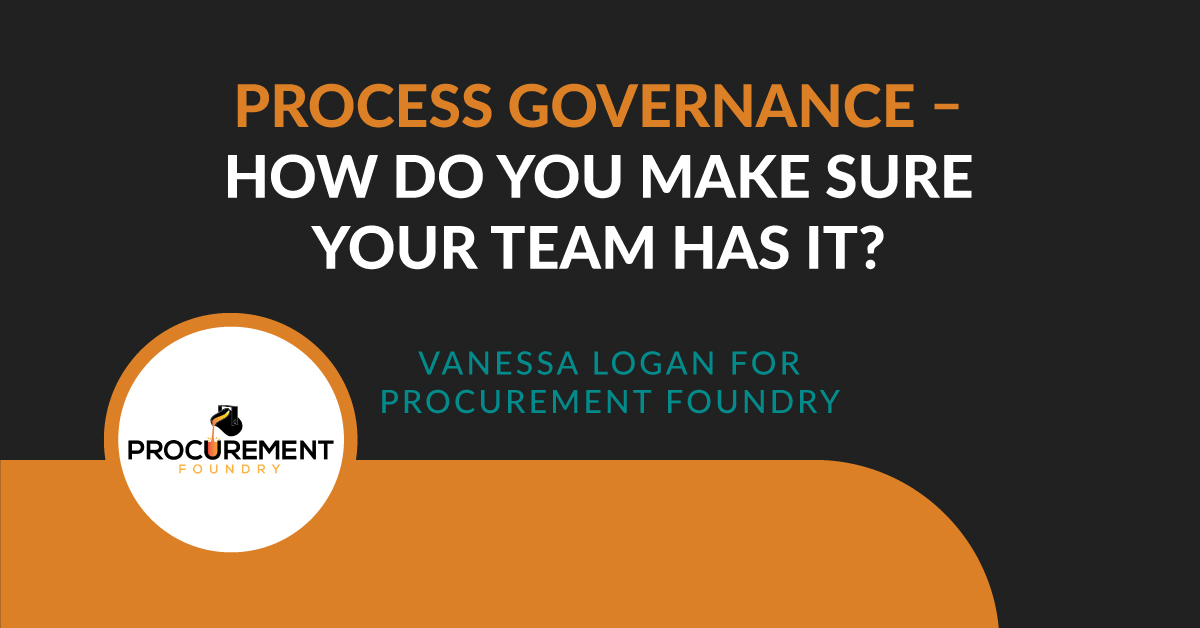Maximizing Savings Opportunities and Procurement's Strategic Value for CPOs
Saving money is not always about pinching pennies: advanced and data-driven insights enable you to identify real cost-saving opportunities, negotiate...
3 min read
![]() Vanessa Logan
:
3/21/22 10:43 AM
Vanessa Logan
:
3/21/22 10:43 AM

Modern procurement performs a wide variety of tasks, including handling anything from simple contract renewals to complex RFPs—and everything in between. When something goes wrong, it is often because of a process error that can be traced back to procurement and strategic sourcing. For this reason, having a powerful—and practical—governance process in place should be a top priority.
Governance is how a company streamlines and optimizes its management, tasks, and services to ensure that everything is taken care of properly and in a manner that is acceptable to—and expected by—both managers and clients. In this article, we will discuss why process governance is so important and how you can make sure you have processes that align with governance.
Most organizations have neither formal processes established for significant parts of work performed nor a way to ensure satisfactory completion of the necessary tasks assigned. This means that, by default, work is completed in a somewhat haphazard, ad-hoc nature. As a result, any documentation of what work was completed—and how—is similarly unstructured and varied. It’s reactive instead of strategic.
This lack of streamlined organization and structure or protocol exposes procurement to many risks, including more mistakes. It also exposes the function and larger organization to unfavorable audits (or worse).
To avoid these pitfalls, procurement organizations should have high-level process maps for each type of project. These should be complete with established requirements and a systematic way of working to ensure that everything accomplished is done the right way, with the proper approvals having been received.
Following process makes the entire end-to-end sourcing activity more efficient and productive. Also, with all the regulatory pressure and scrutiny from internal stakeholders today, we leave ourselves open to risk unless and until we have these maps and set protocols in place. Mavenlink discusses more about this process, including a 10-step process to establish your own.
Once maps are in place and you have a real plan, you still must test things out before jumping in. This is common sense when you think about it. After all, while in the long run, mandated company-wide processes can be the solution to ultimate success, putting them into place requires a patient and often delicate process—a process full of tests.
For example, all the new rules and practices outlined in the process maps must first be tested by the team members across all departments using them. This testing window is vital because it can be crucial in highlighting any issues, errors, or complications that may pop up unexpectedly. Especially if new, digital tools for sourcing events and vendor management are being introduced.
You can think of it like working out the kinks while also allowing a bit longer, gentler learning curve for any team members who may need more time to adjust, understand, and implement new processes in their daily routine. Your patience and judgment will ultimately pay off in a smoother transition and ultimate success by testing things out first.
Once you have planned, tested, and gone through initial implementation, something (probably many things) will inevitably need to be updated in the future. When it comes to deciding on and overseeing these updates, only a few chosen team members should be responsible.
Pick wisely among your trusted team members, choosing stakeholders with experience or at least an understanding of governance. Then, place the responsibility of updating process and procedure as needed up to them with the ultimate review and approval by executives.
As you are working to improve your process governance, it is vital that you monitor how things are going at every step. This includes keeping track of any shortcomings that you see crop up or any other issues that you notice are arising as you are working through implementation.
For instance, you can take a mental inventory or ask your team members for feedback on how things are going. Questions you may want to look out for include: Where are we succeeding in implementing governance? Where are we falling short?
Taking this inventory and documenting everything in an official review will help to hone and sharpen your governance strategies as you go.
Establishing process is all about managing risk. Get a demo from Focal Point to learn how we can help with process questions, governance, and management. You can also learn more on our blog.
Written by Vanessa Logan

Saving money is not always about pinching pennies: advanced and data-driven insights enable you to identify real cost-saving opportunities, negotiate...

The topic of our recent roundtable discussion with a dozen Procurement Foundry community members—exploring potential flaws in procurement incentive...

Every 30 days or so, I get the same alert on my phone—“Your electricity bill is available for viewing.” I take a quick look, make sure nothing seems...